Company Lake is a scrappy bit of woods and water on the banks of the Columbia River near Troutdale Oregon. Birds flock to it.
I was going through some old files yesterday and rediscovered this 10 minute piece. I don’t have any memories associated with the composition—a minimal suite for piano, bells and electric piano I found surprisingly well paced and strong in the coda—but I recall my visit to the place I recorded the soundscape just a year ago.
The soundscape is from the roughly 70 acre cottonwood grove near Company Lake, a small body of water near the former site of an Alcoa aluminum plant known for the last half of the previous century as Reynolds Metals. The area was named a superfund site by the EPA in 1994. In 2004 the aluminum plant that once used more electricity than the entire city of Portland (back in 1981) was demolished. After being cleaned up, the site was redeveloped as a FedEx distribution center.
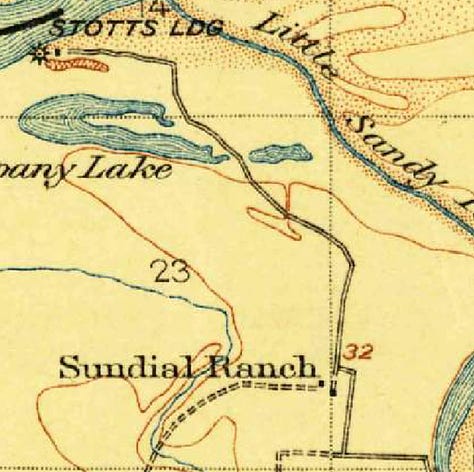
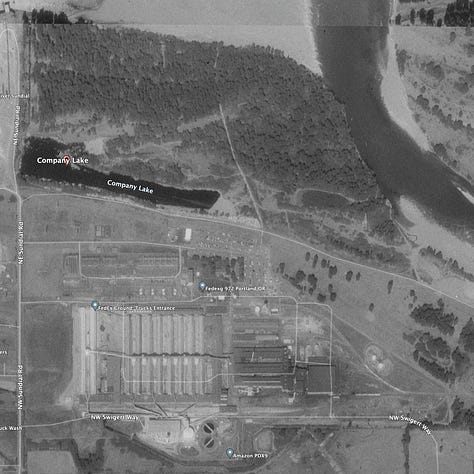
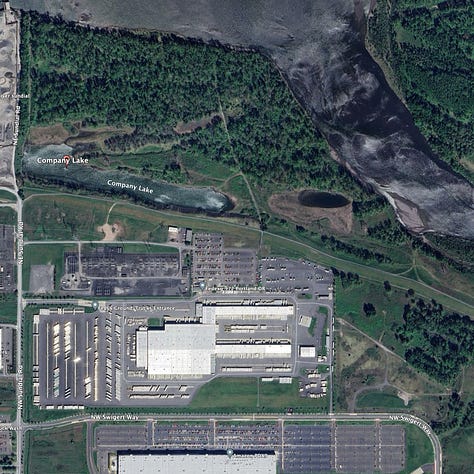
The FedEx employee parking lot used to welcome birders to the Company Lake environs. Last year, however, I arrived to find a gated lot, fenced off with barbed wire. I’m going to hazard a guess that this has something to do with car prowls and houseless camping, but there’s no official word on that. To get to the wooded area today you have to walk a half mile on a bike path from the closest public road. All the more privacy for the birds, I suppose, but a change that left me feeling a little deflated at the time. In retrospect, not really a big deal.
I mean, let’s be honest, what can we expect from a place called “Company Lake”? It’s almost a cartoonish appellation; something you would expect in an episode of the Simpsons. Three-eyed fish and barrels of industrial waste, anyone?
Who named it Company Lake and why did it stick? Google couldn’t tell me, and Chat GPT (4.0) hallucinated with gusto: “The name "Company Lake,"originates from its historical association with the Union Pacific Railroad Company. The lake, along with several other lakes and ponds in the area, was created as a result of gravel extraction operations conducted by the railroad company.” Bla-bla-blah… No such thing occurred! The lake was likely created as a flood channel before becoming choked off. The name? Well it likely comes from the era of land ownership cited in newspapers as “Sundial Ranch Company” between 1910 and 1924, referring to the 2400 acre tract near Troutdale held by the Union Meat Company. In those days it was still a wild landscape, according to a 1941 reminiscence by Ben Hur Lampman in The Oregonian:
Yon was a great country before it was diked, in the times when the river refreshed it with regularity. With the wood ducks winging over the shining expanse of it, and a static excitement in the soft air, and the willows smelling like spiced varnish.
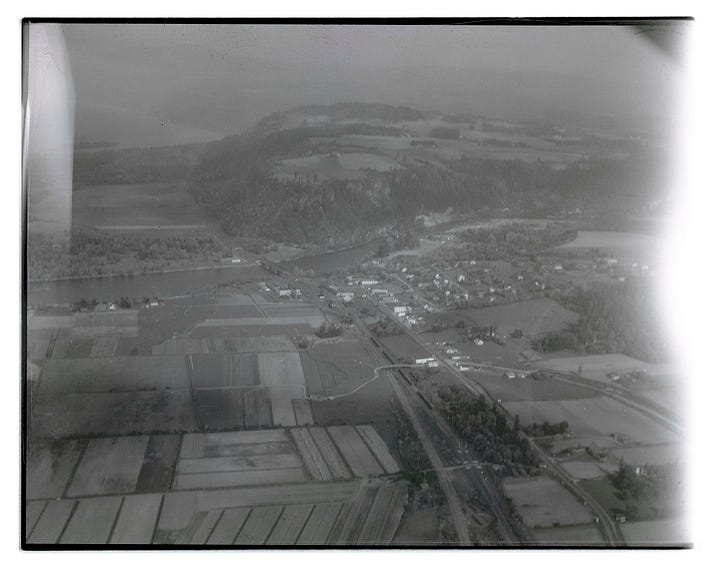
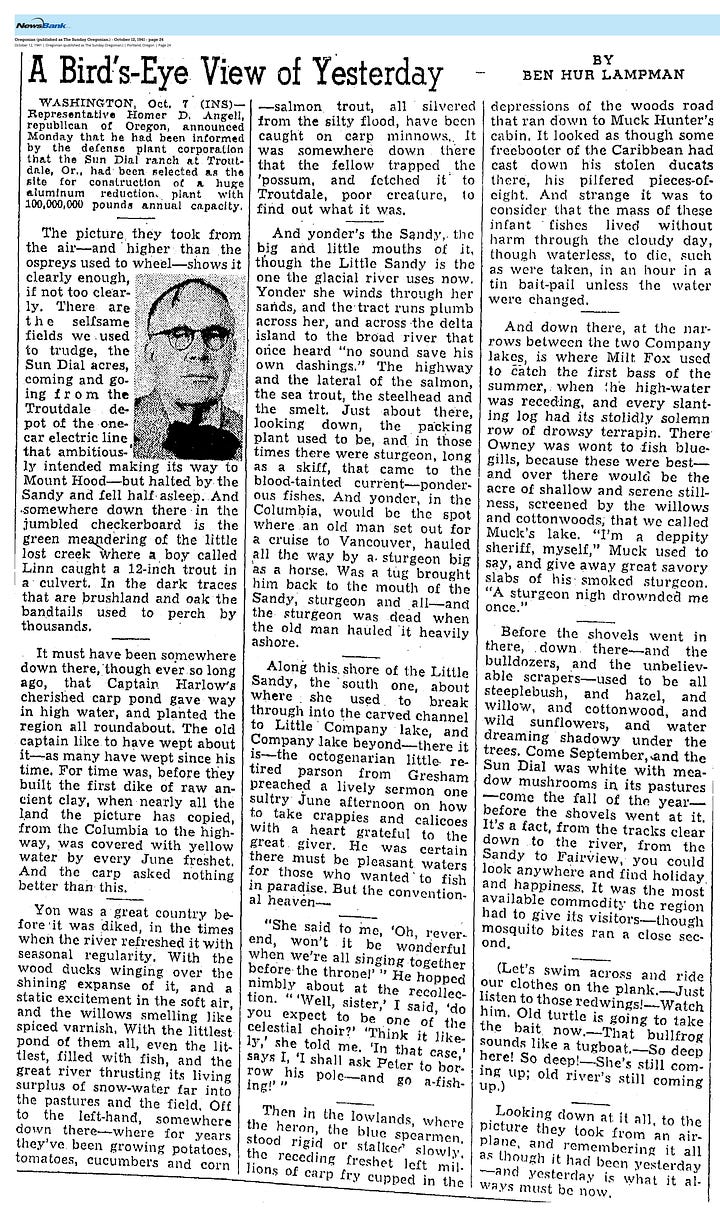
So in truth, “Company Lake” is a misnomer. The lake is on the “wild” side of the dike amongst the low-lying cottonwoods. It’s not a titan of industry cesspool. Company Lake today is like a moat to a no man’s land, cordoned off by industry and forgotten by most, re-wilding in obscurity.
I’ve decided not to restrict access to this recording. Thanks goes to my subscribers for supporting my work and making this possible. Thank you for your interest, and for being here.
Before I leave you, let’s just take a moment to contemplate the Lovers Oak, which once stood near Company Lake, another testament to the resilience of life.
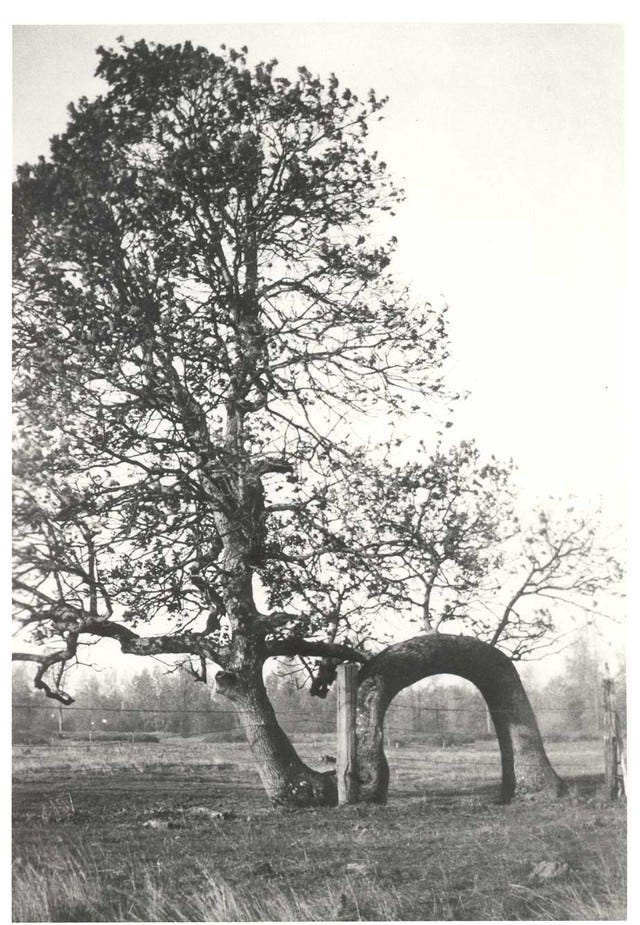
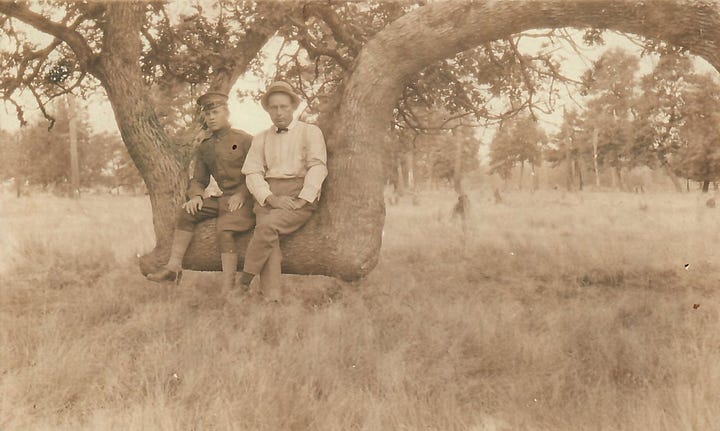
The original tree was shaped by an 1876 Columbia River flood. The slender oak was forced over one log and under another, maturing into the shape of the letter "S" lying on its side. The lowest curve of the S-shaped tree formed a perfect bench where friends and lovers met on pleasant Sunday afternoons. Local residents began to call it the Lovers Oak.
During World War II when the government built the aluminum plant nearby, it was agreed to fence and protect the tree. The publicity resulting from that decision brought the tree to the attention of Ripley's "Believe it or Not," a nationally syndicated cartoon featuring unusual items throughout the world.
After the war, the tree was forgotten by most. It fell in the Columbus Day windstorm of 1962, but the image remained in memory as the logo of the Troutdale Historical Society. -troutdaleoregon.gov






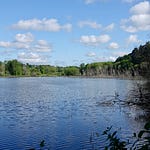
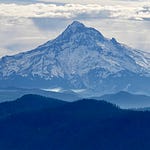
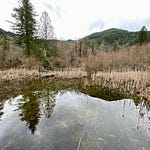
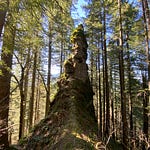
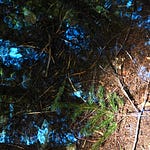
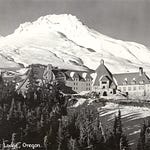
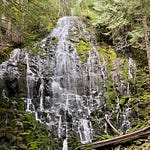
Company Lake